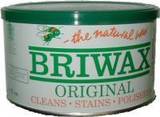Refinishing furniture blog
FURNITURE POLISHES
Furniture Care Supplies– There are several factors to weigh when deciding to use polishes and
waxes on furniture and other wooden objects. One critical factor is that the
ingredients in commercial polishes and cleaning products are rarely
disclosed. Moreover, these ingredients can be, and frequently are, changed
without warning or notification. These ingredients may be harmless or
harmful to the furniture (and to you) and you have no way of knowing in
advance.
Furniture Refinishing Supplies– Polishing products are available in three forms: aerosol (spray); liquid;
and semisolid. Here is a quick look at their benefits and drawbacks when refinishing.
AEROSOLS (Spray Polishes)
Aerosols are convenient. However, they have been among the worst
offenders in introducing silicone oils and other contaminants onto
furniture. In addition, they may contain solvents that attack varnishes and
lacquers. While some of the “dusting” aerosols appear to be benign
when applied to a cloth and not the piece of furniture, the result is
similar to using a damp, clean dust cloth.
LIQUIDS
Furniture Care Supplies– Like aerosols, liquid polishes are easy to use. There are two primary
forms of commercial liquid products for “Furniture Care Supplies”: emulsion
cleaner or polishes and “oil type” polishes. Emulsion polishes are
waxes, oils, detergents, organic solvents, and other materials suspended in
water for ease of application. These products can be extremely powerful
cleaners that leave a desirable sheen on the surface. However, the visual
effect usually diminishes as the liquid dries. Moreover, like aerosols,
emulsion polishes can introduce contaminants onto the furniture, but because
they are liquids they place much more volume than sprays on the furniture
surface.
Oil polishes are even more troublesome. Much like emulsion polishes, oil
polishes can be a complex blend of ingredients including oils, waxes,
perfumes, colorants, “cleaners,” and organic solvents. They can
render extremely pleasing surfaces and are used frequently as final finishes
by themselves. However, oils used as polishes or cleaners can be very
damaging.
Nondrying oils (paraffin, mineral, and “lemon oil,” which is
usually mineral oil with colorants and perfumes added) tend to be more
benign than drying oils, but even so some oil remains as a liquid on (or in)
the object. Dust and other airborne contaminants readily stick to wet
surfaces, especially oils. But nondrying oils don’t undergo chemical
reactions or directly damage the furniture.
Drying oils, on the other hand, such as linseed, tung, or walnut oil, are
a different matter altogether. These materials solidify, or “dry”
through a chemical reaction with the air called oxidation. Over time this
reaction makes them increasingly difficult to remove. Their permanence is
fine if the oil is employed as the finish, but not good if it is used as a
maintenance polish. By itself, having a polish that is difficult to remove
would be an irritating but not an insurmountable problem. Unfortunately, as
drying oils age they tend to yellow and in the presence of acids they are
chromogenic (become Colored), turning a dark, muddy brown or opaque black.
Traditionally, cleaning and polishing concoctions comprised of linseed
oil, turpentine, beeswax, and vinegar (acetic acid) were widely used even in
the museum field until recently. They turned out to be a disaster waiting to
happen. The results of their use are readily apparent to even the casual
observer: a thick incrustation of chocolate-colored goo that is neither hard
enough to be durable nor soft enough to wipe off easily. The furniture is
left with an unsightly coating that is very difficult to remove without
damaging the underlying surface.

SEMISOLIDS
By virtually any measure semisolid polishes are the least damaging to
wooden objects. Frequently called “paste waxes,” these products
are actually a very concentrated solution of waxes. Provided the ingredients
do not include undesirable contaminants like silicone or high concentrations
of damaging organic solvents such as alcohol, xylene, or toluene, paste
waxes are an excellent polish for the surfaces of most wooden objets.
Because waxes are exceedingly stable and don’t cause many of the problems
inherent in the previously mentioned polishes, they are the material of
choice for furniture conservators and other caretakers of furniture and
wooden objects. But paste waxes have their faults too: unfortunately, they
require the most active contact with the surface of the furniture, and also
need the most physical labor for proper application. Buffing out a wax
polish can be very hard work, and in general, the better quality the wax,
the harder the buffing that is needed. However, the results and benefits to
the furniture are worth the extra effort.
Fortunately, as the most durable and stable polishing material, paste wax needs to be applied much less often than aerosols or liquids. Ideally, wax polishing should be conducted no more than twice a year for areas of extremely heavy wear (desktops, chair arms, etc.) and once every three or
four years for table and chair legs, cabinets, and similar areas.
If a surface can no longer be buffed to the sheen appropriate for a waxed
surface, it is likely that the wax has worn off. In that case, apply another
light coat of wax to the affected area in accordance with the product
instructions. Wax that is applied too frequently or improperly can build-up
and cause an unsightly surface. When the wax is used correctly, however, the
solvent content of the new wax will “clean off” any previous wax
remaining on the surface ad will simply integrate the old into the new.

Thanks for visiting our refinishing furniture blog and hope it helped you decide on what Furniture Care Supplies to use.